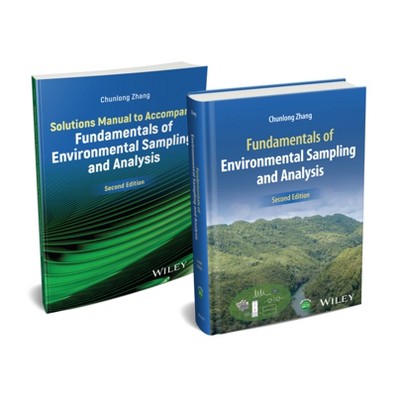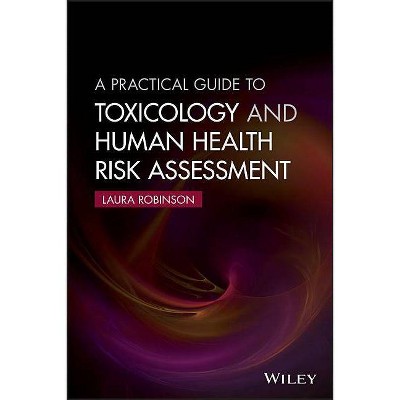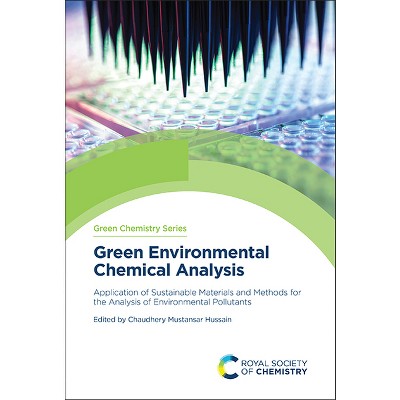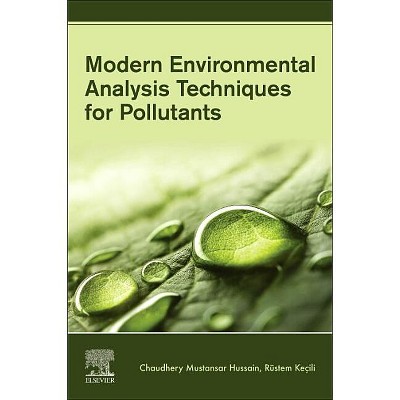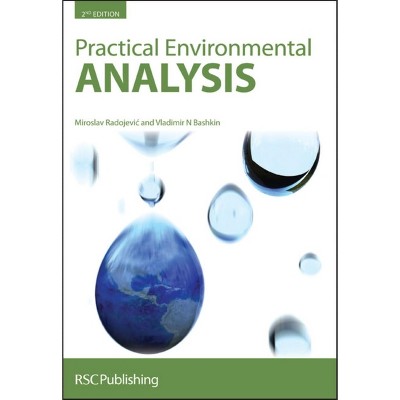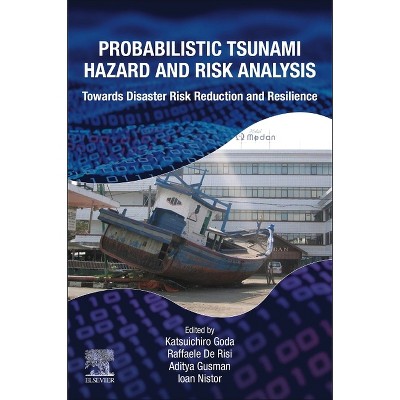Quantitative Environmental Risk Analysis for Human Health - 2nd Edition by Robert A Fjeld & Timothy A Devol & Nicole E Martinez (Hardcover)

About this item
Highlights
- QUANTITATIVE ENVIRONMENTAL RISK ANALYSIS FOR HUMAN HEALTH An updated edition of the foundational guide to environmental risk analysis Environmental risk analysis is a systematic process essential for the evaluation, management, and communication of the human health risk posed by the release of contaminants to the environment.
- About the Author: Robert A. Fjeld, PhD, is an Emeritus Professor and Dempsey Chair of Environmental Engineering, Department of Environmental Engineering and Earth Sciences, Clemson University, USA.
- 528 Pages
- Science, Chemistry
Description
About the Book
"Decisions that impact human health are made all the time. Quantitative Environmental Risk Analysis for Human Health provides readers with the basic skills and knowledge needed to manage, evaluate, or perform environmental risk assessments and risk analyses for both chemicals and radioactive contaminants. This book explains the fundamental methodology for analyzing environmental risk with examples for selected applications. Key elements of the environmental risk methodology include: (1) source term and release characterization, (2) migration of contaminants in various media, (3) exposure assessment, (4) dose-response evaluation, (5) risk characterization, and (6) risk communication and management. Also included is an introduction to uncertainty analysis and environmental laws and regulations. The new edition includes two new chapters, significant additions or modifications to five chapters, and the addition of student-oriented learning objectives at the beginning of each chapter. "Case Studies" is a new chapter that provides the student with four risk assessment examples representing a spectrum of purposes and levels of quantitative intensity. The second new chapter, "Screening and Computational Resources", provides brief descriptions of publicly available and commercial software of potential interest to the risk analysis practitioner"--Book Synopsis
QUANTITATIVE ENVIRONMENTAL RISK ANALYSIS FOR HUMAN HEALTHAn updated edition of the foundational guide to environmental risk analysis
Environmental risk analysis is a systematic process essential for the evaluation, management, and communication of the human health risk posed by the release of contaminants to the environment. Performed correctly, risk analysis is an essential tool in the protection of the public from the health hazards posed by chemical and radioactive contaminants. Cultivating the quantitative skills required to perform risk analysis competently is a critical need.
Quantitative Environmental Risk Analysis for Human Health meets this need with a thorough, comprehensive coverage of the fundamental knowledge necessary to assess environmental impacts on human health. It introduces readers to a robust methodology for analyzing environmental risk, as well as to the fundamental principles of uncertainty analysis and the pertinent environmental regulations. Now updated to reflect the latest research and new cutting-edge methodologies, this is an essential contribution to the practice of environmental risk analysis.
Readers of the second edition of Quantitative Environmental Risk Analysis for Human Health will also find:
- Detailed treatment of source and release characterization, contaminant migration, exposure assessment, and more
- New coverage of computer-based analytical methods
- A new chapter of case studies providing actual, real-world examples of environmental risk assessments
Quantitative Environmental Risk Analysis for Human Health is must-have for graduate and advanced undergraduate students in civil engineering, environmental engineering, and environmental science, as well as for risk analysis practitioners in industry, environmental consultants, and regulators.
From the Back Cover
An updated edition of the foundational guide to environmental risk analysis
Environmental risk analysis is a systematic process essential for the evaluation, management, and communication of the human health risk posed by the release of contaminants to the environment. Performed correctly, risk analysis is an essential tool in the protection of the public from the health hazards posed by chemical and radioactive contaminants. Cultivating the quantitative skills required to perform risk analysis competently is a critical need.
Quantitative Environmental Risk Analysis for Human Health meets this need with a thorough, comprehensive coverage of the fundamental knowledge necessary to assess environmental impacts on human health. It introduces readers to a robust methodology for analyzing environmental risk, as well as to the fundamental principles of uncertainty analysis and the pertinent environmental regulations. Now updated to reflect the latest research and new cutting-edge methodologies, this is an essential contribution to the practice of environmental risk analysis.
Readers of the second edition of Quantitative Environmental Risk Analysis for Human Health will also find:
- Detailed treatment of source and release characterization, contaminant migration, exposure assessment, and more
- New coverage of computer-based analytical methods
- A new chapter of case studies providing actual, real-world examples of environmental risk assessments
Quantitative Environmental Risk Analysis for Human Health is must-have for graduate and advanced undergraduate students in civil engineering, environmental engineering, and environmental science, as well as for risk analysis practitioners in industry, environmental consultants, and regulators.
About the Author
Robert A. Fjeld, PhD, is an Emeritus Professor and Dempsey Chair of Environmental Engineering, Department of Environmental Engineering and Earth Sciences, Clemson University, USA. He is a pioneering researcher of quantitative human health risk assessment and the author of numerous related publications.
Timothy A. DeVol, PhD, CHP, is Toshiba Professor of Nuclear Engineering and Director of the Nuclear Environmental Engineering Sciences and Radioactive Waste Management Center at Clemson University. His research interests are on radioactive material detection and environmental health physics.
Nicole E. Martinez, PhD, CHP, is an Associate Professor of Environmental Engineering and Earth Sciences, Clemson University with a Joint Faculty Appointment at Oak Ridge National Laboratory. Her research focuses on dosimetric modeling and the transport and effects of environmental contaminants.
Shipping details
Return details
Trending Non-Fiction






